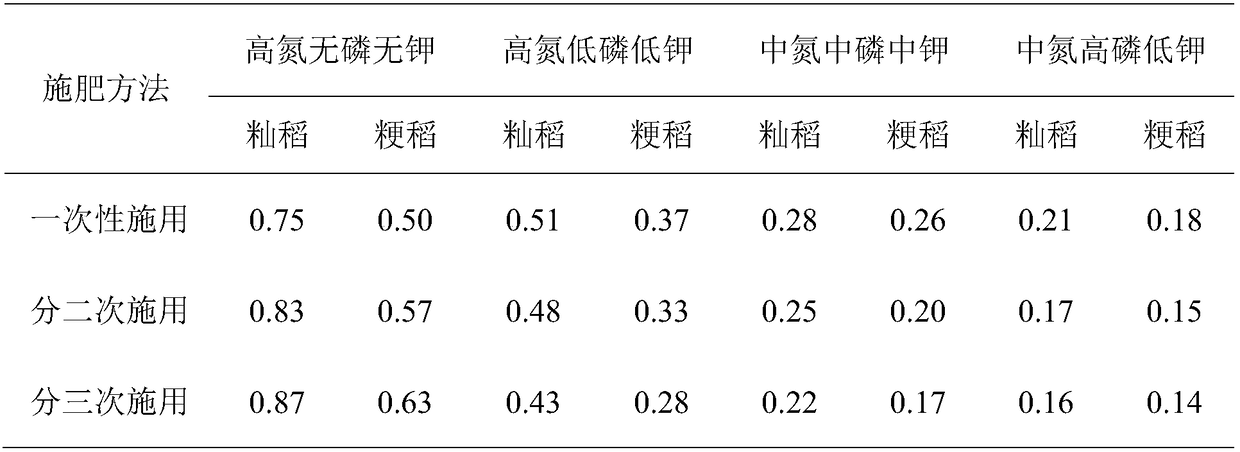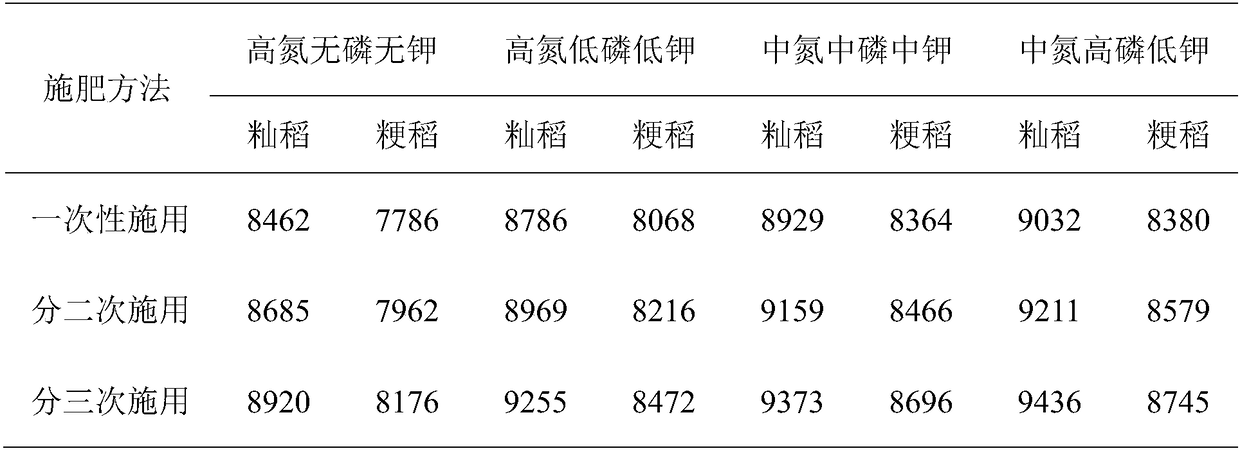Method for reducing lead content in rice grains by using NPK fertilizer together
A technology of rice grains and nitrogen, phosphorus and potassium fertilizers, applied in fertilization methods, rice cultivation, fertilization devices, etc., to achieve the effects of reducing lead content, increasing rice yield, and eliminating threats to human health
- Summary
- Abstract
- Description
- Claims
- Application Information
AI Technical Summary
Problems solved by technology
Method used
Image
Examples
Embodiment 1
[0011] Embodiment 1: A method of combining nitrogen, phosphorus and potassium fertilizers to reduce lead content in rice grains. In the entire rice production cycle, the total nitrogen application rate is 225kg / hm 2 (Medium-level nitrogen application, calculated as pure N), the total phosphorus application rate is 150kg / hm 2 (High level of phosphorus application, with active ingredient P 2 o 5 total), the total potassium application rate is 100kg / hm 2 (low level of potassium application, with active ingredient K 2 O meter). Apply three times, that is, apply 1 / 3 of the total fertilizer amount 3 days before rice seedling planting, 25 days after seedling planting, and 5 days before heading. Since the active ingredient content of different fertilizer varieties is different, the specific fertilizer amount should be calculated according to the active ingredient content of the specific fertilizer variety when fertilizing. Before fertilization, fill the paddy field with a thin la...
PUM
 Login to View More
Login to View More Abstract
Description
Claims
Application Information
 Login to View More
Login to View More - R&D
- Intellectual Property
- Life Sciences
- Materials
- Tech Scout
- Unparalleled Data Quality
- Higher Quality Content
- 60% Fewer Hallucinations
Browse by: Latest US Patents, China's latest patents, Technical Efficacy Thesaurus, Application Domain, Technology Topic, Popular Technical Reports.
© 2025 PatSnap. All rights reserved.Legal|Privacy policy|Modern Slavery Act Transparency Statement|Sitemap|About US| Contact US: help@patsnap.com


